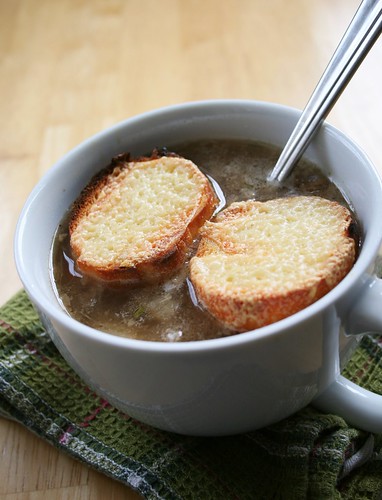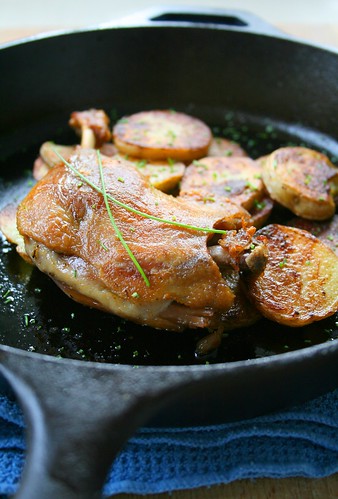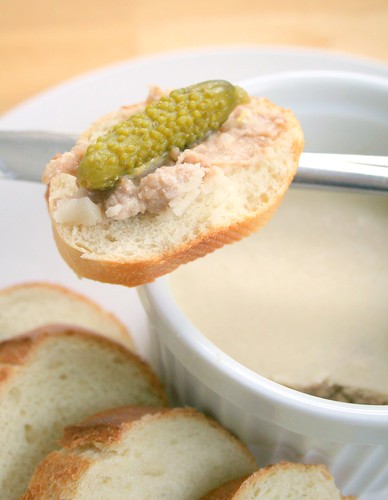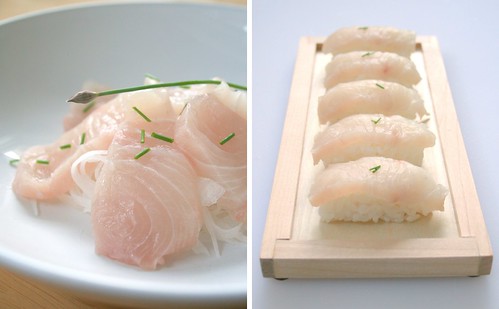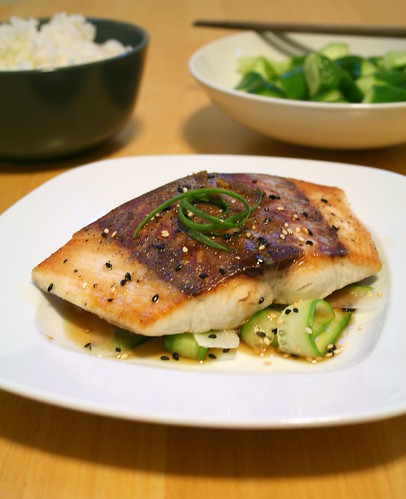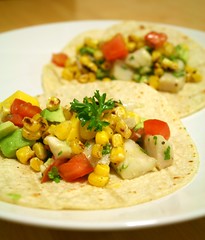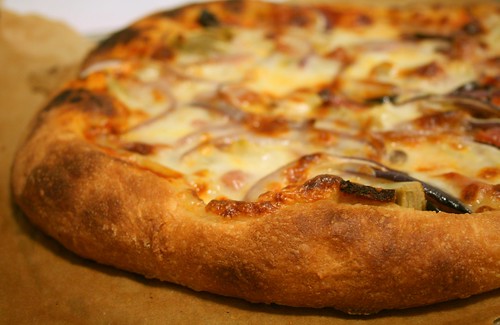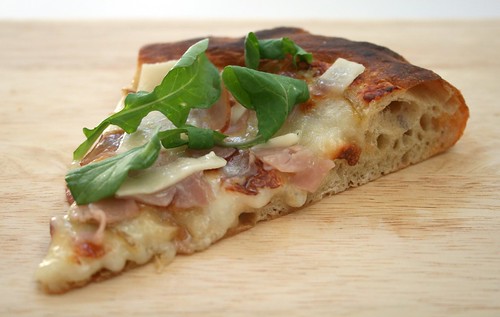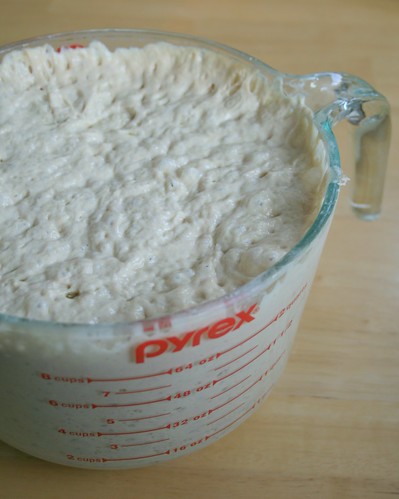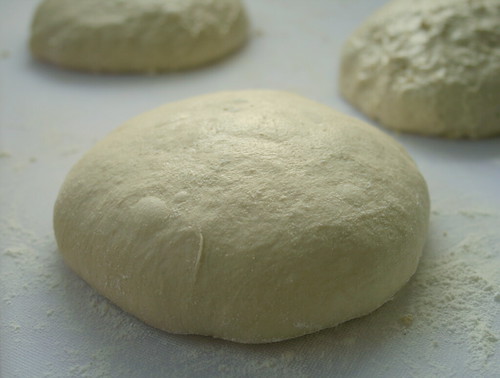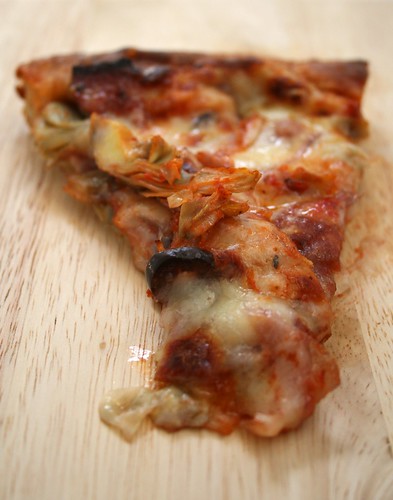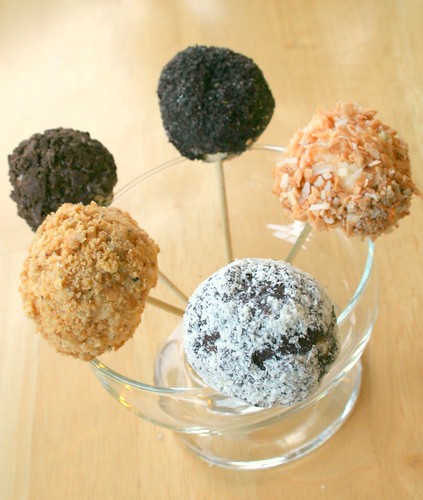 (clockwise from the top: Oreo, Butterscotch Coconut, Dark Chocolate with White Chocolate Powder, Graham Cracker, Chocolate Covered Espresso Beans)
(clockwise from the top: Oreo, Butterscotch Coconut, Dark Chocolate with White Chocolate Powder, Graham Cracker, Chocolate Covered Espresso Beans)They say food tastes better on a stick. It’s hard to improve on something as delicious as cheesecake but put it on a stick and sure enough, I daresay it might be tastier than the not-on-a-stick original. Not only are these cheesecake pops as creamy and decadent as a slice of cheesecake, but they get bonus points for being so gosh darn cute! They're so addictive it’s easy to lose count how many you’ve already devoured and if you make many different flavors, watch out because you may find yourself sampling each one!
Our lovely co-hosts for this month Elle of Feeding My Enthusiasms and Deborah of Taste and Tell chose this recipe from Sticky, Chewy, Messy, Gooey by Jill O’Connor so that each Daring Baker could put their own personal touch on the cheesecake pops. I really loved this challenge because the pops were fun to decorate, absolutely adorable, and sinfully delicious - you can't ask for more! Be sure to check out all the creative ways other DBs decorated their pops by visiting Daring Baker Blogroll.
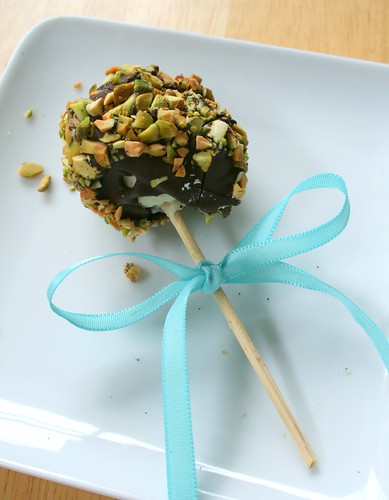 Dark Chocolate Pistachio Cheesecake Pop
Dark Chocolate Pistachio Cheesecake PopNotes:
- Shaping the pops and decorating is quite messy. It's probably better to wear a pair of gloves so you don't get cheesecake all over your hands. I eventually got cheesecake all over everything, the counter, ice cream scoop handle, trays, the faucet, the cupboard (how the hell did that happen? I don’t really know). Then during decorating, I got crumbs all over the kitchen floor. But I still think the end result was worth it.
- I also found that the pops were too soft when stored in the fridge, so I kept them in the freezer. It might be because I pulled the cheesecake out too quickly from the oven but I didn't want to overbake it. They're delicious straight out of the freezer, like cheesecake ice cream, and they don't get too hard, still soft enough to bite through even after a few days in the freezer. Or you can let them warm up a bit before eating.
Cheesecake Pops
from Sticky, Chewy, Messy, Gooey by Jill O’Connor
Makes 30 – 40 Pops (*I made half the recipe)
5 8-oz. packages cream cheese at room temperature
2 C sugar
1/4 C all-purpose flour
1/4 tsp salt
5 large eggs
2 egg yolks
2 tsp vanilla extract
1/4 C heavy cream
Boiling water as needed
Thirty to forty 8-inch lollipop sticks (I used bamboo skewers snapped in half)
1 lb chocolate, finely chopped
2 Tbsp vegetable shortening
(Note: White chocolate is harder to use this way, but not impossible)
Possible decorations:
Chopped nuts
Colored sugar
Sprinkles
Crushed peppermints
Mini chocolate chips
Chopped chocolate covered espresso beans
Cocoa nibs
Toasted coconut
Crushed graham crackers
Crushed Oreos
Preheat the oven to 325 degrees F and adjust an oven rack to the middle position. Bring some water to a boil.
In a large bowl, beat the cream cheese, sugar, flour, and salt until smooth. Add the eggs, egg yolk, vanilla, and cream and beat until smooth.
Grease a 10 inch cake pan (or some ramekins if you made half the recipe). Pour the batter into the prepare pan(s). Place the pans into a larger roasting pan and pour water into the roasting pan until it comes up halfway up the sides of the cake pan. Bake until the cheesecake is firm and slightly golden on top. The recipe said 35 – 45 minutes but for a full recipe I’m guessing it will take closer to an hour since my half recipe baked in 30 – 40ish minutes.
Cool the cheesecake to room temperature then cover the cheesecake and refrigerate until it is very cold, 3 hours or up to overnight.
When the cheesecake is very cold and firm, scoop the cheesecake into 2 ounce balls and place on a parchment paper lined baking sheet. I wore a pair of gloves and used a 1 tablespoon ice cream scoop since I have no idea how big a 2 ounce ball. Be warned, this step is pretty messy. Insert a stick into each ball and freeze until they are very hard, 1 – 2 hours.
First prepare all your desired toppings. When the cheesecake pops are frozen, prepare the chocolate before taking them out. First use only half the chocolate and shortening. Melt the chocolate and shortening in a heatproof bowl set over a saucepan of simmering water. Stir until completely smooth. Do not overheat the chocolate; turn the heat down so that the pot of water is barely simmering.
Work with only a few pops at a time and keep the rest in the freezer. Quickly dip each pop into the melted chocolate and swirl to coat it completely, then immediately roll it in a desired decoration. The frozen pops will harden the chocolate very quickly so you’ll need to work fast. Set the finished pop on a clean parchment paper lined sheet. The recipe said to refrigerate until ready to serve but I think the pops store better in the freezer. Let them warm up a little bit before serving but they taste great straight out of the freezer too. For longer term storage, keep them in an airtight container in the freezer.


